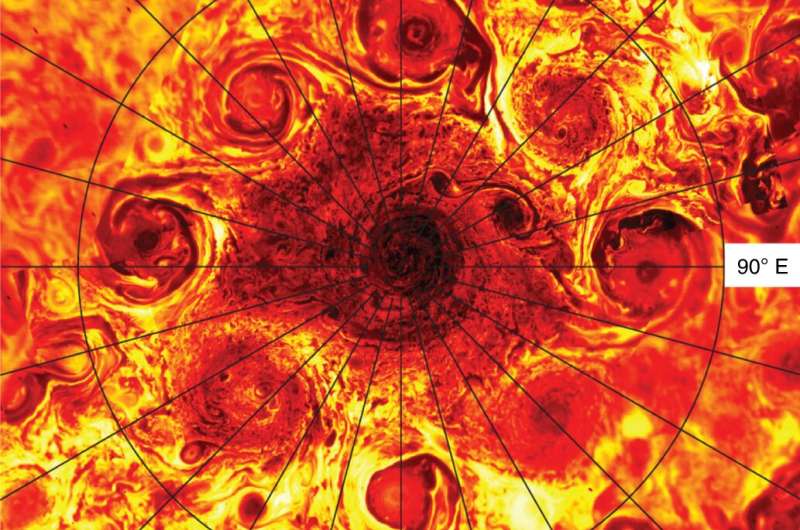At the north and south poles of Jupiter, an amazing picture is observed when several large cyclones symmetrically surround one in the center. Scientists have tried to explain why this happens.

Cyclones rotating around the pole
When the Juno probe began studying the Jupiter system in July, it made one of the most impressive discoveries about the poles of the giant planet. It turned out that a giant storm the size of North America is located right above the north, and eight more of the same are circling it.
The situation is the same over the south pole, only there are five storms around the perimeter of the central one, and recently a sixth joined them. The main mystery associated with these phenomena is their stability.
Juno is in the polar orbit of Jupiter. This fact will allow the device to study the poles of the moon of the planet Europa during a close flyby on September 29. But all these years, flying over the poles of the gas giant, it sees the same picture. Cyclones seem to dance around the central one, preserving the configuration of regular polygons.
What contributes to the stability of storms
All these years, scientists have been trying to explain the amazing stability of cyclones at the poles of Jupiter. For some reason, they do not merge, do not scatter in different directions and do not fade out. And now scientists from the USA and France have published an article in Nature Astronomy, in which they explained how this can be caused.
They created a model describing the polar regions of Jupiter’s atmosphere to some shallow depth. It assumes that there is a stable influx of heat from the depths of the planet and a powerful current around the cyclone zone, directed in the opposite direction to their rotation. It is it that stabilizes cyclones at this point in space.
However, no traces of such an influx of substances have yet been found. Even the authors of the article admit that in order to explain all the phenomena occurring in the atmosphere of a giant planet, it will be necessary to develop more comprehensive models.
According to phys.org
Follow us on Twitter to get the most interesting space news in time
https://twitter.com/ust_magazine
